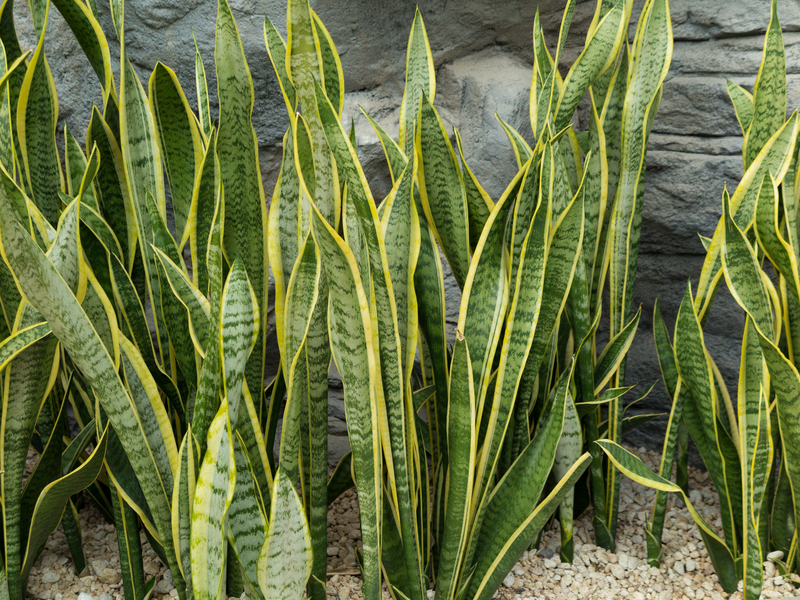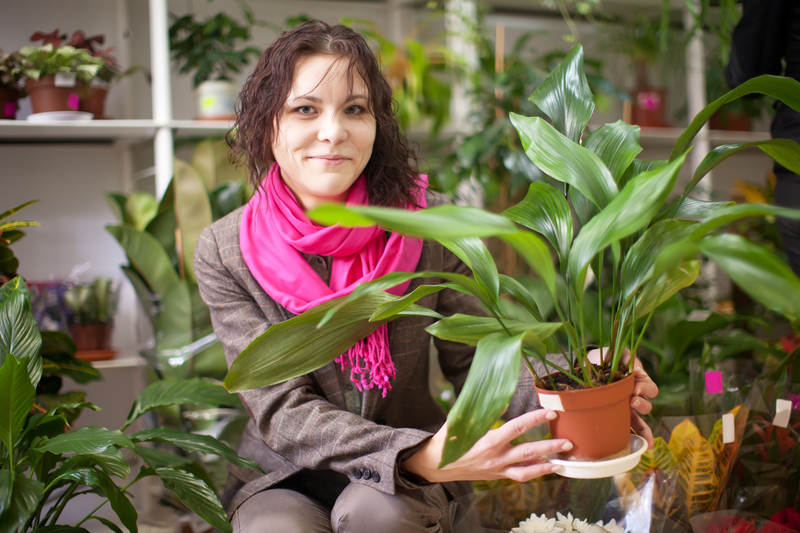Crafting a Garden Oasis for Young Explorers
Posted on 20/06/2025
Crafting a Garden Oasis for Young Explorers: Inspire Adventure, Learning, and Nature Play
Are you ready to transform your backyard into a magical retreat for your curious kids? Crafting a garden oasis for young explorers combines creativity, education, and fun into a single outdoor environment. Not only does a thoughtfully designed garden nurture your child's sense of adventure, but it also becomes a vibrant space where discovery and learning blossom naturally.
Why Build a Garden Oasis for Kids?
Children are naturally curious, and their imaginations thrive in open, stimulating environments. Gardens provide endless opportunities for hands-on exploration, sensory stimulation, and physical development. By designing a garden retreat tailored for kids, you create a safe haven that supports their growth and fosters a lifelong love for nature.
- Boosts Creativity and Imagination: Nature play supports role-play and storytelling.
- Encourages Physical Activity: Exploring, climbing, and digging keep children active and healthy.
- Stimulates Learning: Interactive gardens foster curiosity about plants, insects, and weather.
- Supports Emotional Well-Being: Calming greenery and tranquil corners help kids relax and de-stress.
- Promotes Eco-Consciousness: Kids learn to respect and care for the environment.

Essential Elements of a Garden Oasis for Young Adventurers
When crafting a backyard haven for your young explorers, focus on variety, safety, and sensory engagement. Consider the following core elements as you design your child-friendly garden space:
1. Safe and Accessible Pathways
Paths encourage exploration and help children navigate their special oasis. Use soft, non-slip materials--think mulch, pea gravel, or smooth flagstone. Curvy walkways inspire curiosity: what awaits around the bend?
- Install winding trails to pique interest
- Add stepping stones for hopscotch or balancing practice
- Consider a small bridge over a "river" of blue pavers or groundcover
2. Zones for Discovery and Play
Designate spaces for different types of play. Diverse micro-environments fuel imaginative adventures and group interaction.
- Digging Zone: Use a sandpit or raised bed of soil for tactile play and gardening projects.
- Climbing Area: Add logs, boulders, or sturdy structures for gross motor skills.
- Hideaways and Dens: Create little nooks with willow teepees, tents, or tall sunflowers for secret meetings and reading.
- Creative Corners: Setup a craft table or mud kitchen for art and sensory fun.
- Water Features: Incorporate a splashing element--a safe water table, mini stream, or birdbath-- to attract wildlife and cool off on sunny days.
3. Sensory Experiences and Textures
A well-planned garden oasis stimulates all five senses. Plant scented herbs, colorful blooms, and rustling grasses. Add bells, wind chimes, or musical panels for auditory delight.
- Touch: Lamb's ear (Stachys), ornamental grasses, and smooth stones invite hands-on exploration.
- Sight: Bold colors and diverse foliage patterns brighten up corners and paths.
- Smell: Fragrant flowers (lavender, sweet peas) enhance memory and mood.
- Sound: Water trickling, wind moving leaves, or simple garden instruments engage hearing.
- Taste: Edible plants and herbs let kids snack as they play and learn about gardening.
4. Wildlife-Friendly Features
Encourage young explorers to become naturalists by inviting creatures big and small into your garden oasis.
- Birdhouses and Feeders: Attract feathered friends for birdwatching and identification games.
- Pollinator Plants: Grow native flowers for bees, butterflies, and ladybugs.
- Insect Hotels: Create bug habitats using bamboo, pinecones and twigs, sparking curiosity about tiny creatures.
- Pond or Mini-Wetland: Safely attract frogs or dragonflies (always supervise around water).
5. Comfortable Seating and Shady Retreats
Young adventurers need cozy corners for quiet moments, reading, or observing nature. Include:
- Benches under trees or pergolas covered with climbers like sweet pea, morning glory, or wisteria.
- Hammocks or outdoor beanbags in dappled shade for lounging.
- Picnic blankets and pop-up tents for impromptu snack breaks or stories.
Planning Your Garden Retreat: Step-by-Step
1. Assess Your Space
Start by studying your available backyard area. Take note of sunlight, existing plants, and any safety hazards. Involve your children in this process; what features excite their imaginations? Draw a rough map to visualize potential zones and pathways.
2. Choose a Theme or Story
A cohesive theme makes your garden sanctuary for young ones even more captivating. Try a woodland adventure, fairy tale world, jungle safari, or secret science lab. Let your kids' interests guide your creative choices--they'll invest more in caring for the space.
3. Select Kid-Friendly Plants
Prioritize non-toxic, low-maintenance plants to ensure safety and success. Use a mix of quick-growing flowers, tactile leaves, fragrant herbs, and edible treats. A few resilient classics:
- Marigolds, zinnias, and sunflowers *for quick-blooming color*
- Mint, lemon balm, and chives *for taste and smell*
- Lamb's ear, snapdragons, and succulents *for touch*
- Peas, strawberries, and cherry tomatoes *for snacking*
4. Ensure Safe Garden Design
Check all play structures for sharp edges and stability. Avoid thorny, poisonous, or allergenic plants. Limit hard surfaces, keep tools locked away, and always supervise water features. Consider fencing to define boundaries and keep pets or wildlife at bay.
5. Add Interactive and Custom Elements
Personalize your children's oasis with:
- Custom signs or painted rocks with their names
- Handmade wind spinners or fairy doors
- Art galleries hung between trees
- Chalkboard walls for garden sketches or plant labels
Year-Round Activities in a Garden Oasis for Young Nature Lovers
Spring
- Plant seeds and watch them sprout together
- Host a scavenger hunt for first blooms or bugs
- Build birdhouses and observe nesting birds
Summer
- Host picnic lunches, reading circles, or art projects outside
- Construct a sunflower fort or bean tent for shade
- Gather flowers for pressing, or herbs for homemade lemonade
Autumn
- Collect colorful leaves and make nature collages
- Harvest vegetables and cook simple recipes together
- Build bug hotels to shelter overwintering insects
Winter
- Hang homemade feeders and track garden visitors
- Search for animal footprints in frosty beds
- Create stick shelters or fairy houses with winter branches
Encouraging Independent Play and Exploration
A child-oriented backyard retreat should offer enough freedom for safe, independent play. Use these tips to foster adventure:
- Keep sight lines clear for easy supervision, while allowing quiet nooks for solo time.
- Rotate movable elements (logs, pots, sandpits) to refresh interest.
- Allow children to choose and care for their own "special" plants or areas.
- Invite friends or neighbors for teamwork and social learning in the garden.
Building Confidence and Curiosity
Simple unscripted play--digging, stacking rocks, chasing butterflies--lets kids practice problem-solving, observation, and motor skills. Encourage open-ended questions: "What will we find under the log?" or "How many colors can we see today?" Every discovery turns your garden into a science lab or storytelling stage.
Maintenance Tips for Your Children's Garden Retreat
Keep Things Manageable
- Choose low-maintenance plants requiring minimal fuss
- Set up routine garden chores: watering, weeding, harvesting--and reward their efforts
- Adjust features as kids grow; refresh sand, repaint decorations, swap out outgrown play items
Involve the Family
Let siblings, grandparents, and friends pitch in. Rotating responsibilities gives everyone ownership of the oasis and ensures it evolves with family needs. Mark achievements or seasons with photos, garden journals, or painted milestones.
Sustainable and Eco-Friendly Garden Practices
Teach your young explorers about environmental stewardship from the start.
- Composting: Make a bin for kitchen scraps and leaves--kids love seeing food turn into "magic" soil!
- Water Conservation: Collect rainwater in barrels for garden use; mulch beds to retain moisture.
- Wildlife Habitat: Leave a brush pile for beetles and birds, let some grass grow long, and avoid pesticides.
- Reduce, Reuse, Recycle: Use upcycled containers, repurposed wood, and recyclable decor for a creative approach.

Inspiration: Creative Ideas for Your Kid-Friendly Garden Oasis
- Mystery Doorways: Put little doors on trees to suggest fairy or gnome habitats.
- Living Willow Tunnels: Train willow rods into hiding spaces and tunnels for shade and adventure.
- Bug Safari Kits: Make "explorer" kits with magnifying glasses, journals, and collection jars.
- Glow-in-the-Dark Pathways: Use luminous pebbles for magical trails visible at dusk.
- Mini Orchard: Plant dwarf fruit trees in containers for easy harvests and seasonal interest.
- Nature Themed Art Installations: Hang wind mobiles, decorate stones with paints, or string bunting between branches.
Conclusion: Helping Young Explorers Thrive
A garden oasis crafted with children in mind becomes far more than a play area. It's a living classroom, a refuge, and a springboard for creativity, providing endless hours of healthy fun and growth. Designing with intention--embracing nature's beauty, diversity, and rhythm--helps your young adventurers develop resilience, curiosity, and a deep sense of wonder.
Start small, dream big, and watch how your backyard transforms into a world of discovery for your kids. Every leaf, petal, stone, and splash will bring learning to life--and nurture young explorers for years to come.
Ready to Start Crafting Your Garden Oasis?
Gather your family, spark some ideas, and let nature be your guide. Your child's greatest adventure may be waiting just outside your door!

